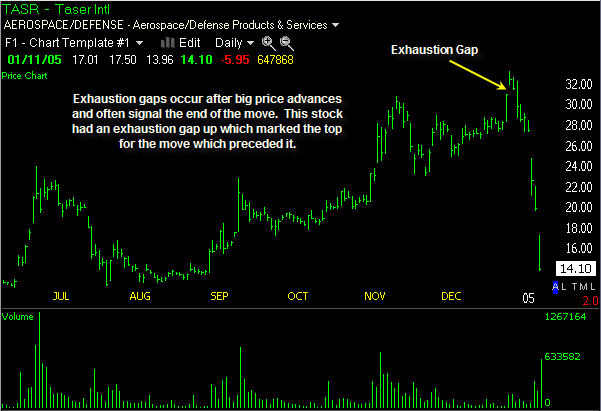The exhaustion gap occurs late in a big price move and is often a warning that the strong trend may soon come to an end, making exhaustion gaps reversal patterns. Occasionally, an exhaustion gap will mark the ultimate high or low at the end of a trend. This is the chart depiction of panic buying in uptrends, or capitulation during downtrends. During these times, traders want in or out of the stock at any price. A parabolic uptrend will often end with an exhaustion gap.
Exhaustion gaps are marked by high volume, and can offer tremendous fade trade opportunities with excellent profit potential as the tide turns and momentum shifts quickly. Exhaustion gaps are filled soon after they are formed.
Example of an Exhaustion Gap:

The example above shows an exhaustion gap to the upside which occurred in this stock following a lengthy advance. The exhaustion gap was quickly filled and marked the high for this stock. These emotional price gaps caused by panic can provide some excellent trading opportunities when looking for a reversal.
Be sure to learn more about stock gaps such as common gaps, runaway gaps, and breakaway gaps.











